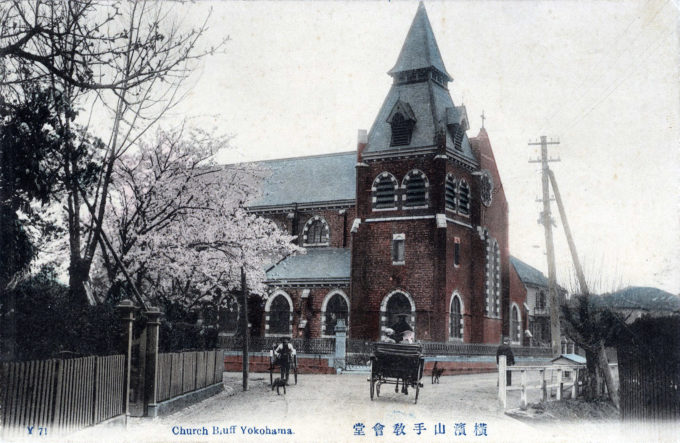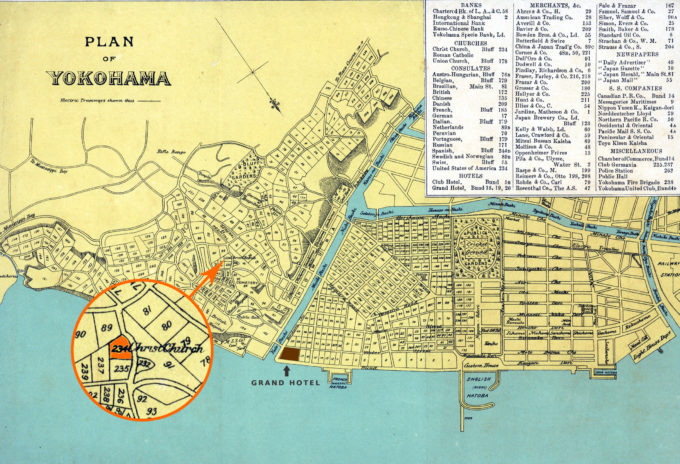
“教會堂, Christian teaching hall.” Christ Church (Anglican) on Colonel’s Corner, The Bluff, Yokohama, c. 1910. Constructed of Glasgow red bricks that had been carried as ballast by steamships arriving from Great Britain, the church would stand from 1901 until 1923, when it was leveled by the Great Kanto Earthquake. A scandal (of sorts) would envelop the church within a few years of its completion.
See also:
Yokohama Bluff, c. 1910.
St. Hilda’s Chapel, Tokyo, c. 1912.
“The end of the first Church [built of wood and completed in 1864] remains a mystery but the evidence that services were held in the Public Hall prior to the completion of the new building indicates a sudden and unexpected end of the old building. Was it fire? Hardly, for someone would surely recall such an event. It is possible that the building was rendered unsafe due to the ravages of termites which so quickly destroy woodwork in this part of Japan once they get a hold. This however can only be speculation.
“The new Church was built on a site within the South Camp fence and just within the Colonel’s Gate. It was a large building designed on Victorian lines and typical of many built at the time in the expanding industrial towns of Great Britain. Like many of the great merchant houses, public buildings and hotels in the old Settlement, it was built of red brick carried as ballast by sailing ships from Glasgow. There must have been a great effort by the community to build this big Church which was consecrated on Trinity Sunday, June 2nd, 1901.
“… In 1909 an incident occurred which caused considerable distress within the parish and must have detracted from the reputation of the Church.
“[A]bout thirty most respectable English couples were living in sin, or in a ‘state of concubinage’, as the newspapers more elegantly expressed it, and that no less a person than the Anglican Bishop of Tokyo was responsible for their predicament.
“… [It was because] during the years of extraterritoriality, that is to say up to July, 1899, religious marriages performed in the Churches within the Foreign Concessions in Japan were regarded as valid in English law, but when the Concessions became incorporated within Japanese municipalities and foreigners came under Japanese law, the laws of the respective countries ceased to operate except within the embassies and consulates; consequently the laws of England in regard to marriages in the Church also ceased to operate and all the marriages thereafter that had been performed in Anglican Churches in Japan, without any civil ceremony at the Consulate, of which there were over thirty, were consequently invalid.
“… In due course of time, however, after a special act of Parliament was passed rendering those marriages retrospectively valid, the couples concerned found that the state of concubinage in which they had innocently been living had come to an end.”
– The Church on Colonel’s Corner, by the Reverend Eric Casson, 1962


